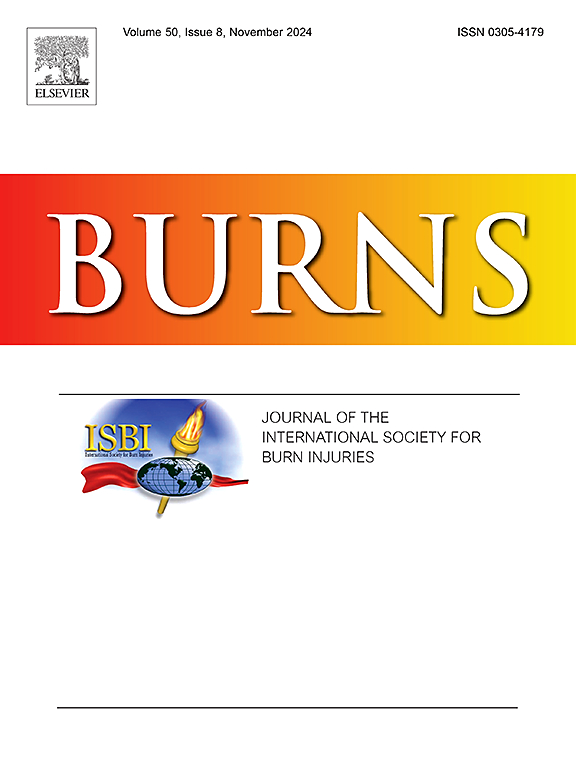Promoting patient health literacy in burn care through artificial intelligence language learning models: A study of text analysis and simplification
IF 3.2
3区 医学
Q2 CRITICAL CARE MEDICINE
引用次数: 0
Abstract
Health literacy is essential in patient care, especially in burn treatment, where understanding care information can significantly influence recovery outcomes. Despite national guidelines recommending that patient education materials be written at a 6th- to 8th-grade reading level, many resources exceed this complexity, exacerbating poor health literacy and patient outcomes. This study investigates the effectiveness of artificial intelligence language learning models in simplifying patient-facing burn care information to adhere to these readability standards. Fifteen excerpts from academic institutions' burn care materials were evaluated for readability using a traditional readability calculator and four AI models: ChatGPT 4o, Microsoft Copilot, Gemini, and Meta AI. The traditional readability calculator provided a baseline score, which was compared to the scores from the AI models. Results indicated that ChatGPT 4o and Microsoft Copilot had readability scores that were comparable to the readability scores provided by the traditional calculator. Additionally, when tasked with simplifying the texts, Microsoft Copilot, Gemini, and Meta AI reduced the readability scores to within the desired 6th to 8th-grade level. These findings suggest that AI models, particularly Microsoft Copilot, Gemini, and Meta AI, can effectively simplify medical texts, making them more accessible to patients. However, clinician oversight is necessary to ensure the accuracy and appropriateness of the simplified materials, promoting better health literacy and patient outcomes in burn care.
通过人工智能语言学习模型促进烧伤护理患者健康素养:文本分析和简化研究
健康素养在病人护理中至关重要,特别是在烧伤治疗中,了解护理信息可以显著影响康复结果。尽管国家指南建议患者教育材料应达到6至8年级的阅读水平,但许多资源的复杂性超过了这一水平,加剧了健康素养的低下和患者的预后。本研究探讨了人工智能语言学习模型在简化面向患者的烧伤护理信息以符合这些可读性标准方面的有效性。使用传统的可读性计算器和四种人工智能模型(ChatGPT 40、Microsoft Copilot、Gemini和Meta AI)对学术机构烧伤护理材料中的15个节选进行了可读性评估。传统的可读性计算器提供了一个基线分数,并将其与人工智能模型的分数进行比较。结果表明,ChatGPT 40和Microsoft Copilot的可读性得分与传统计算器提供的可读性得分相当。此外,当任务是简化文本时,Microsoft Copilot、Gemini和Meta AI将可读性分数降低到所需的6至8年级水平。这些发现表明,人工智能模型,特别是微软的Copilot、Gemini和Meta AI,可以有效地简化医学文本,使患者更容易获得。然而,临床医生的监督是必要的,以确保简化材料的准确性和适当性,促进更好的健康素养和烧伤护理患者的结果。
本文章由计算机程序翻译,如有差异,请以英文原文为准。
求助全文
约1分钟内获得全文
求助全文
来源期刊

Burns
医学-皮肤病学
CiteScore
4.50
自引率
18.50%
发文量
304
审稿时长
72 days
期刊介绍:
Burns aims to foster the exchange of information among all engaged in preventing and treating the effects of burns. The journal focuses on clinical, scientific and social aspects of these injuries and covers the prevention of the injury, the epidemiology of such injuries and all aspects of treatment including development of new techniques and technologies and verification of existing ones. Regular features include clinical and scientific papers, state of the art reviews and descriptions of burn-care in practice.
Topics covered by Burns include: the effects of smoke on man and animals, their tissues and cells; the responses to and treatment of patients and animals with chemical injuries to the skin; the biological and clinical effects of cold injuries; surgical techniques which are, or may be relevant to the treatment of burned patients during the acute or reconstructive phase following injury; well controlled laboratory studies of the effectiveness of anti-microbial agents on infection and new materials on scarring and healing; inflammatory responses to injury, effectiveness of related agents and other compounds used to modify the physiological and cellular responses to the injury; experimental studies of burns and the outcome of burn wound healing; regenerative medicine concerning the skin.
 求助内容:
求助内容: 应助结果提醒方式:
应助结果提醒方式:


